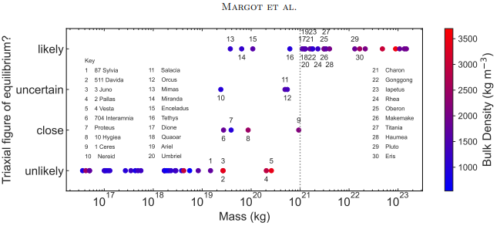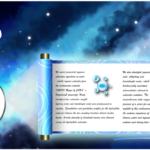2024-07-11 カナダ・ブリティッシュコロンビア大学(UBC)
<関連情報>
- https://news.ubc.ca/2024/07/what-exactly-is-a-planet-scientists-propose-improved-definition/
- https://arxiv.org/abs/2407.07590
惑星を定義する定量的基準 Quantitative Criteria for Defining Planets
Jean-Luc Margot, Brett Gladman, Tony Yang
arXiv Submitted on 10 Jul 2024
DOI:https://doi.org/10.3847/PSJ/ad55f3

Abstract
The current IAU definition of “planet” is problematic because it is vague and excludes exoplanets. Here, we describe aspects of quantitative planetary taxonomy and examine the results of unsupervised clustering of Solar System bodies to guide the development of possible classification frameworks. Two unsurprising conclusions emerged from the clustering analysis: (1) satellites are distinct from planets and (2) dynamical dominance is a natural organizing principle for planetary taxonomy. To generalize an existing dynamical dominance criterion, we adopt a universal clearing timescale applicable to all central bodies (brown dwarfs, stars, and stellar remnants). Then, we propose two quantitative, unified frameworks to define both planets and exoplanets. The first framework is aligned with both the IAU definition of planet in the Solar System and the IAU working definition of an exoplanet. The second framework is a simpler mass-based framework that avoids some of the difficulties ingrained in current IAU recommendations.



